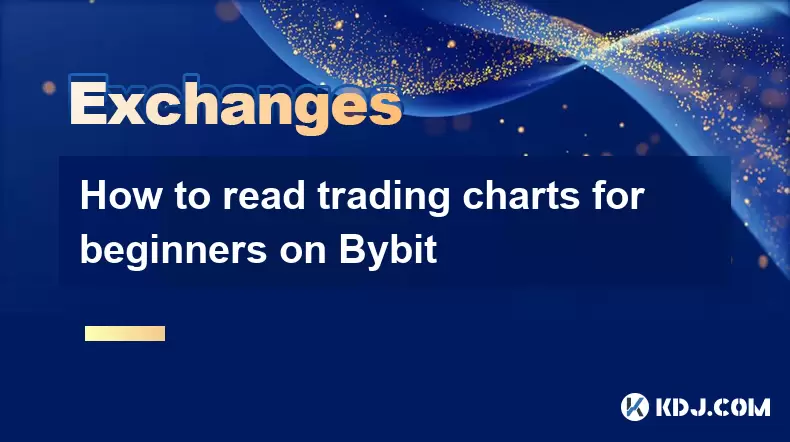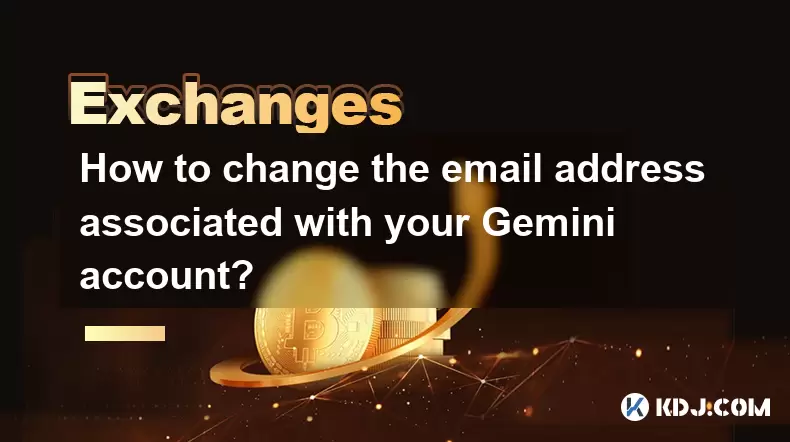-
 Bitcoin
Bitcoin $115100
1.27% -
 Ethereum
Ethereum $3675
2.71% -
 XRP
XRP $2.995
1.45% -
 Tether USDt
Tether USDt $1.000
0.02% -
 BNB
BNB $769.8
2.64% -
 Solana
Solana $168.0
3.25% -
 USDC
USDC $0.9999
-0.01% -
 TRON
TRON $0.3371
1.48% -
 Dogecoin
Dogecoin $0.2051
3.36% -
 Cardano
Cardano $0.7394
2.30% -
 Hyperliquid
Hyperliquid $38.15
0.42% -
 Stellar
Stellar $0.3966
-0.36% -
 Sui
Sui $3.486
2.93% -
 Chainlink
Chainlink $16.72
2.52% -
 Bitcoin Cash
Bitcoin Cash $568.0
4.36% -
 Hedera
Hedera $0.2440
2.59% -
 Ethena USDe
Ethena USDe $1.001
0.04% -
 Avalanche
Avalanche $22.16
2.06% -
 Litecoin
Litecoin $119.1
-0.73% -
 UNUS SED LEO
UNUS SED LEO $8.991
0.04% -
 Toncoin
Toncoin $3.232
-0.39% -
 Shiba Inu
Shiba Inu $0.00001233
2.82% -
 Uniswap
Uniswap $9.717
2.53% -
 Polkadot
Polkadot $3.664
1.85% -
 Dai
Dai $1.000
0.01% -
 Monero
Monero $281.2
-3.89% -
 Bitget Token
Bitget Token $4.350
1.55% -
 Cronos
Cronos $0.1428
5.07% -
 Pepe
Pepe $0.00001050
3.68% -
 Aave
Aave $262.3
3.54%
How to read trading charts for beginners on Bybit
Learn to read Bybit trading charts by understanding candlestick patterns, support/resistance levels, and key indicators like MA and RSI for better trading decisions.
Aug 07, 2025 at 10:09 am

Understanding the Basics of Trading Charts on Bybit
Before diving into chart analysis, it’s essential to understand what a trading chart represents. On Bybit, trading charts display the price movement of a cryptocurrency over time. These charts are visual tools that help traders make informed decisions. The most common chart type used is the candlestick chart, which provides four key data points per time interval: open, high, low, and close prices. Each candlestick gives a snapshot of market sentiment during that period. A green candle indicates the price closed higher than it opened, while a red candle means the price dropped during that timeframe. Recognizing these colors and shapes is the first step toward mastering chart reading.
Navigating the Bybit Chart Interface
To begin analyzing charts on Bybit, log in to your account and select a trading pair, such as BTC/USDT. Click on the "Trade" tab to access the trading interface. The chart area occupies the central portion of the screen. Above the chart, you’ll find several customizable options. You can adjust the timeframe (e.g., 1-minute, 1-hour, 1-day) using the dropdown menu. Beneath the chart, there are tabs for Indicators, Drawing Tools, and Orders. Familiarize yourself with the layout. The volume bar chart located beneath the main price chart shows trading activity—higher volume often confirms the strength of a price move. Hovering over any candle reveals exact price and volume data for that period.
Interpreting Candlestick Patterns
Candlestick patterns offer insights into potential price reversals or continuations. Beginners should focus on a few foundational patterns. A doji forms when the open and close prices are nearly identical, suggesting market indecision. A hammer appears after a downtrend and has a long lower wick, signaling a possible bullish reversal. Conversely, a shooting star has a long upper wick and may indicate a bearish reversal after an uptrend. To spot these patterns on Bybit:
- Open the BTC/USDT chart and set the timeframe to 1-hour.
- Look for candles with long wicks and small bodies.
- Compare the pattern’s location—whether it appears after a sustained uptrend or downtrend.
- Confirm the signal with the next candle’s movement.
Using the drawing tools, you can annotate these patterns directly on the chart for better tracking.
Using Technical Indicators on Bybit
Bybit offers built-in technical indicators that simplify chart analysis. Access them by clicking the "Indicators" button below the chart. Start with the Moving Average (MA). This tool smooths price data to identify trends. Add a 9-period MA and a 21-period MA to your chart. When the 9 MA crosses above the 21 MA, it generates a bullish signal, often called a "golden cross." The opposite, a "death cross," occurs when the 9 MA crosses below the 21 MA. Another useful indicator is the Relative Strength Index (RSI). Set it to a 14-period default. RSI values above 70 suggest the asset is overbought, while values below 30 indicate oversold conditions. These can help anticipate reversals.
To apply an indicator:
- Click the "Indicators" button.
- Search for "Moving Average" or "RSI."
- Select the desired settings and click "Apply."
- Adjust colors and periods using the settings icon next to the indicator name.
Overlay multiple indicators cautiously—too many can clutter the chart and lead to confusion.
Drawing Support and Resistance Levels
Support and resistance are key concepts in technical analysis. Support is a price level where buying pressure tends to overcome selling pressure, preventing further declines. Resistance is where selling pressure typically halts upward movement. To draw these on Bybit:
- Switch to a 4-hour or daily chart for clearer trends.
- Identify recent price lows that have bounced multiple times—these form support.
- Locate price highs where rallies have stalled—these are resistance levels.
- Use the horizontal line tool under "Drawing Tools" to mark these zones.
- Extend the lines into the future to anticipate where price might react.
Price often retests these levels. When resistance is broken, it may turn into future support, and vice versa. Combine these levels with candlestick patterns for stronger signals.
Setting Up Price Alerts and Annotations
Bybit allows traders to set visual and mental reminders using drawing tools. After identifying a key resistance level, use the text annotation tool to label it, such as "Strong Resistance at $65,000." To stay informed, use external tools or mental notes to track when price approaches these zones. While Bybit does not offer native price alerts on charts, you can monitor your positions actively or use third-party platforms that integrate with Bybit’s API. Always double-check your drawn levels after significant news or macroeconomic events, as volatility can shift support and resistance zones.
Practicing with a Demo Account
Before trading real funds, use Bybit’s demo trading feature to practice chart reading. Access it from the top navigation bar by selecting "Derivatives" and switching to "Demo." The demo environment mirrors live market conditions but uses virtual funds. Practice identifying candlestick patterns, applying indicators, and drawing support/resistance lines. Test how price reacts to your drawn levels. This risk-free environment helps build confidence and refine your analytical skills without financial exposure.
Frequently Asked Questions
How do I change the chart theme on Bybit?
Click the gear icon in the bottom-right corner of the chart interface. Under "Appearance," select "Dark" or "Light" mode. You can also customize candle colors—set bullish candles to green and bearish ones to red for clarity.
Can I save my chart layout on Bybit?
Yes. After customizing your indicators and drawings, click the floppy disk icon near the chart settings. Name your template (e.g., "My RSI Setup") and save it. You can reload this configuration anytime from the "Layouts" dropdown.
Why does the volume bar sometimes appear flat?
Flat volume bars indicate minimal trading activity during that period. This often occurs during low-liquidity times, such as weekends or holidays. Always consider volume when analyzing breakouts—low-volume breaks are less reliable.
How do I remove a drawing or indicator I no longer need?
Click on the drawing (e.g., a trendline) to select it, then press the Delete key. For indicators, click the "Indicators" button, find the one in your list, and click the trash icon next to it.
Disclaimer:info@kdj.com
The information provided is not trading advice. kdj.com does not assume any responsibility for any investments made based on the information provided in this article. Cryptocurrencies are highly volatile and it is highly recommended that you invest with caution after thorough research!
If you believe that the content used on this website infringes your copyright, please contact us immediately (info@kdj.com) and we will delete it promptly.
- BlockDAG, Litecoin, and Cardano: Charting the Course in Crypto's Dynamic Waters
- 2025-08-07 09:09:06
- Fireverse Token: Igniting a Musical Revolution in Web3
- 2025-08-07 08:27:45
- Ethereum, L2 Withdrawals, and Decentralization: A New Yorker's Take
- 2025-08-07 08:32:33
- Avalanche vs. Ruvi AI: Daily Sales Tell a Story of Crypto Disruption
- 2025-08-07 06:29:35
- DeSoc: The Crypto to Buy Now for a Decentralized Future (and Maybe 43x Gains!)
- 2025-08-07 06:50:16
- Arctic Pablo Coin: Riding the Meme Coin Wave with a Deflationary Twist
- 2025-08-07 07:18:13
Related knowledge

How to trade with a bot on Kraken
Aug 07,2025 at 01:28pm
Understanding Kraken’s Bot Trading EnvironmentKraken is one of the most established cryptocurrency exchanges, offering a robust platform for both manu...

How to read trading charts for beginners on Bybit
Aug 07,2025 at 10:09am
Understanding the Basics of Trading Charts on BybitBefore diving into chart analysis, it’s essential to understand what a trading chart represents. On...

How to set and manage alerts on the Gemini app?
Aug 03,2025 at 11:00am
Understanding the Gemini App Alert SystemThe Gemini app offers users a powerful way to stay informed about their cryptocurrency holdings, price moveme...

How to use the Gemini mobile app to trade on the go?
Aug 04,2025 at 09:14am
Setting Up the Gemini Mobile AppTo begin trading on the go using the Gemini mobile app, the first step is installing the application on your smartphon...

How to set up a corporate account on Gemini?
Aug 05,2025 at 03:29pm
Understanding Gemini Corporate AccountsGemini is a regulated cryptocurrency exchange platform that supports both individual and corporate account crea...

How to change the email address associated with your Gemini account?
Aug 06,2025 at 08:49pm
Understanding the Importance of Updating Your Email on GeminiYour email address serves as a primary identifier and communication channel for your Gemi...

How to trade with a bot on Kraken
Aug 07,2025 at 01:28pm
Understanding Kraken’s Bot Trading EnvironmentKraken is one of the most established cryptocurrency exchanges, offering a robust platform for both manu...

How to read trading charts for beginners on Bybit
Aug 07,2025 at 10:09am
Understanding the Basics of Trading Charts on BybitBefore diving into chart analysis, it’s essential to understand what a trading chart represents. On...

How to set and manage alerts on the Gemini app?
Aug 03,2025 at 11:00am
Understanding the Gemini App Alert SystemThe Gemini app offers users a powerful way to stay informed about their cryptocurrency holdings, price moveme...

How to use the Gemini mobile app to trade on the go?
Aug 04,2025 at 09:14am
Setting Up the Gemini Mobile AppTo begin trading on the go using the Gemini mobile app, the first step is installing the application on your smartphon...

How to set up a corporate account on Gemini?
Aug 05,2025 at 03:29pm
Understanding Gemini Corporate AccountsGemini is a regulated cryptocurrency exchange platform that supports both individual and corporate account crea...

How to change the email address associated with your Gemini account?
Aug 06,2025 at 08:49pm
Understanding the Importance of Updating Your Email on GeminiYour email address serves as a primary identifier and communication channel for your Gemi...
See all articles

























































































